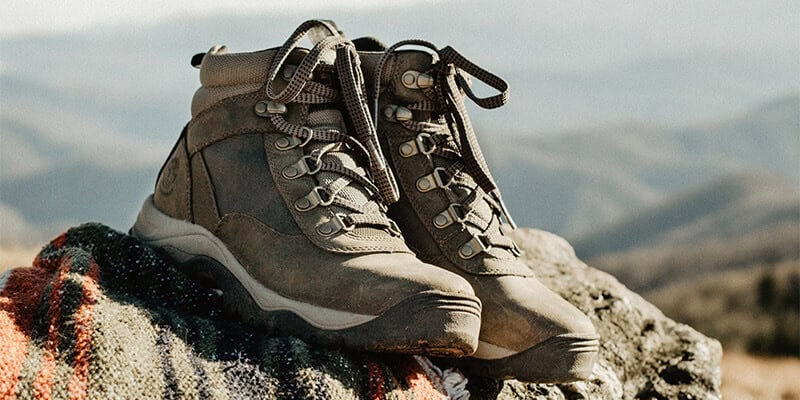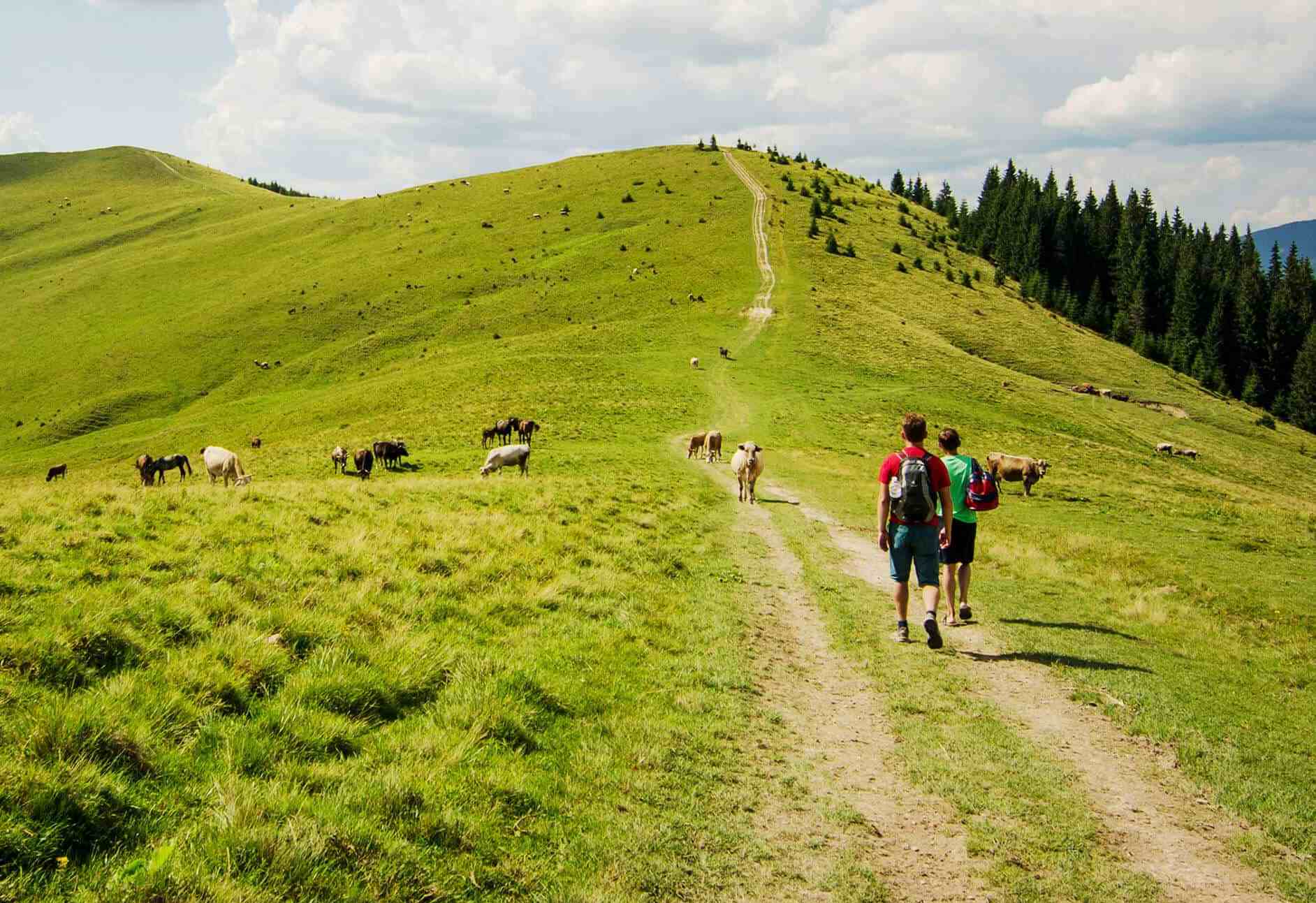One of the most common questions people will ask before walking the Camino is “What shoes should I wear?” Choosing the best walking shoes, trainers, or boots for your Camino depends on a number of factors. The best footwear for one person may be different for another person or a different route!



To make for a more pleasant Camino, it’s important to find shoes that fit well and are suited to the weather and terrain of the trip you’re planning.
Tips for Choosing the Right Shoes for Walking the Camino de Santiago
Your shoes need to fit the walk that you are doing. Choosing the right shoes for walking the Camino de Santiago can make a big difference in your Camino experience. Consider the following factors to help you choose the correct footwear for your pilgrimage.
What Terrain Will Your Camino Shoes Be For?
Research the type of terrain on your Camino route. The Camino de Santiago is a network of routes with a huge amount of variation in landscape. Is the section that you are walking flat or rocky with ascents and descents or open upland or a mixture?
The beginning of the Camino Frances has some rough, rocky sections with steep climbs, but the last 100km is easy walking on very well worn paths. You might choose different shoes for the two types of terrain.
If you are booking with Follow the Camino then we can advise you on the terrain of the section or sections that you are walking. You will also have your main bag transferred between your accommodation, allowing you to pack more than one option for your shoes without worrying so much about added weight.
Here is our recommendation on the type of shoe, boot, or other footwear that is likely to be the most appropriate for each of the main Camino Routes:
| Sandals | Sneakers /runners |
Trail runners |
Trek shoes |
Hiking boots |
|
|---|---|---|---|---|---|
| Camino Frances Section 1 |
 |
 |
 |
  |
 |
| Camino Frances Section 8 |
 |
 |
  |
  |
 |
| Camino Portugues Section 5 |
 |
 |
  |
  |
 |
| Camino del Norte |  |
  |
  |
  |
|
| Le Puy Camino |  |
 |
 |
  |
  |
| Via de La Plata |  |
 |
  |
  |
 |
| Camino Primitivo |  |
 |
  |
 |
Weather and Seasons
The time of year that you walk the Camino de Santiago will also impact on which shoes will work best for you. In very hot weather, leather boots can get sweaty and uncomfortable quickly. In very cold weather, sneakers and trail runners will not provide enough protection – and you definitely shouldn’t wear sandals!
Have a look at our weather tool to see what temperatures to expect through the year on the main Camino routes.

How To Choose The Right Camino Walking Shoes
When preparing for the Camino, picking the right walking shoes will be one of the most important decisions you’ll make. A pair of shoes that offer as much durability and protection as possible without sacrificing comfort or flexibility.
Recommended Camino shoes features to look for:
- Breathable and flexible upper part
- Lightweight
- Low heel
- Avoid flared heels
- Contoured footbed
- Wide toe box
- Deep heel cup for ankle stability
- Find your match! Find the pair that better suits your foot shape
- Durable (above 804kms – 500 miles – per pair)
- Arch support if needed – a physiotherapist can let you know if this would be helpful for you!
Re-Think Your Shoe Size And Fitting
It’s a good idea to get walking footwear professionally fitted to ensure the correct size.
However, your correct size in walking shoes might be a half or even a full size larger than normal. This is because of the repeated pounding of the feet during long-distance walking which causes them to swell and spread.
So always try on new walking shoes at the end of the day, preferably after walking at least several kilometres. Also, take along socks and any replacement insoles you plan to wear on your Camino.
Squashed toes can lead to blisters so make sure you have enough room in the toe box to wiggle your toes. The rest of your foot should be snug in the shoe with no movement.
Check that the sole of your foot is completely supported and that there is no rubbing around the ankle. You also need 1 to 2 cm between the end of your toes and the end of the shoe. The easiest way to check this is to remove the insole and stand on it with your full weight and your heel seated into the back of the insole.
Borrow a weighted backpack and walk around the shop to get a more realistic picture of how the shoes will feel during your Camino. If the shop has a ramp, walk up and down it to see if your foot moves in the shoe. In particular, try bouncing up and down on your feet while facing downwards on the ramp to see if your feet will slide forward on a descent. Your heel shouldn’t move around in the shoe as this can lead to heel blisters.
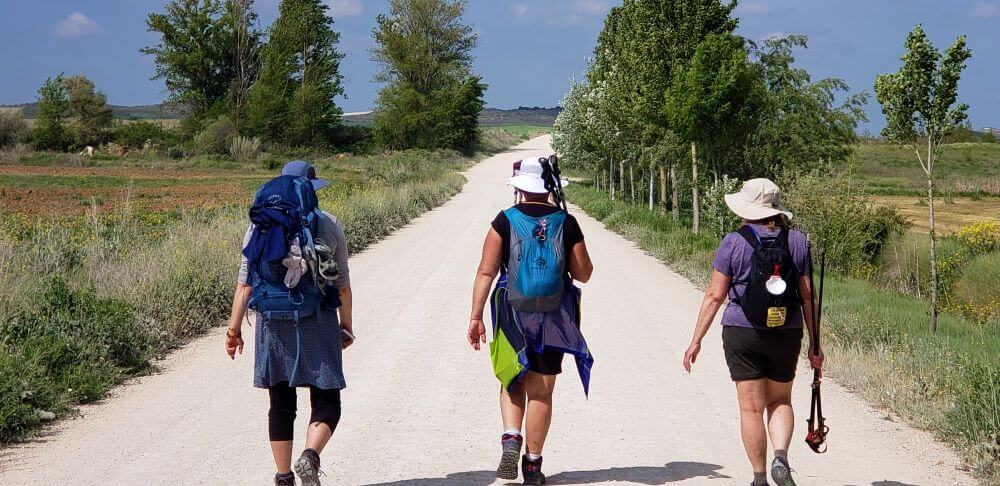
Waterproof or Non-Waterproof Camino Walking Shoes?
If you’re walking in a cool, wet time of the year, waterproof shoes help keep feet dry and warm for longer.
However, in hot weather, waterproof shoes will hold in heat and moisture which can lead to blisters. Shoes without waterproofing have better ventilation but take in water quickly on rainy days. However, they also dry much quicker, so we prefer these.
There is always a chance of rain, no matter the season, so bring extra socks to change into, in case of a rainy spell.
Socks for the Camino
When thinking about shoes it is also very important to talk about socks! The right pair of socks is very important to a comfortable Camino. During dry seasons you might be ok with normal cotton socks, but as soon as it rains those can get cold, lumpy, and uncomfortable.
We recommend looking at trail running or hiking socks in either merino wool or a synthetic performance blend. These wick away moisture and keep your feet healthy while you walk. Wool is also naturally less smelly than most other materials!
Make sure that your socks are the correct length for your shoes and that they don’t slip down on long walks. Socks will be most comfortable if they are higher than the ankle of the shoe. This also adds another layer of protection between your foot and your shoes to prevent rubbing.
Make Your Camino Footwear More Comfortable By Using Insoles
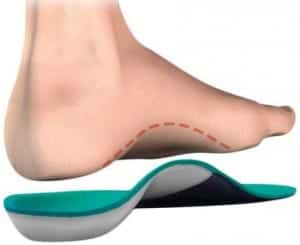
Another way to get a better fit is to use replacement insoles. The insoles supplied with most walking footwear are not specialised. If you need extra arch support or cushioning, these can be replaced with insoles that better support your feet and can prevent or correct pronation or supination (rolling inwards or outwards) of the foot.
While these misalignments may not cause problems under normal walking conditions, they can contribute to painful conditions like tendonitis, plantar fasciitis, and shin splints during long-distance walking.
If you know that this is something that you are prone to – check in with your physiotherapist before you go.
Off-the-shelf insoles offering varying levels of support are available from sporting goods shops and chemists. Heat moulded, custom-made inserts are also available online and from specialist suppliers.
Boots Or Trail Walking Shoes for the Camino?
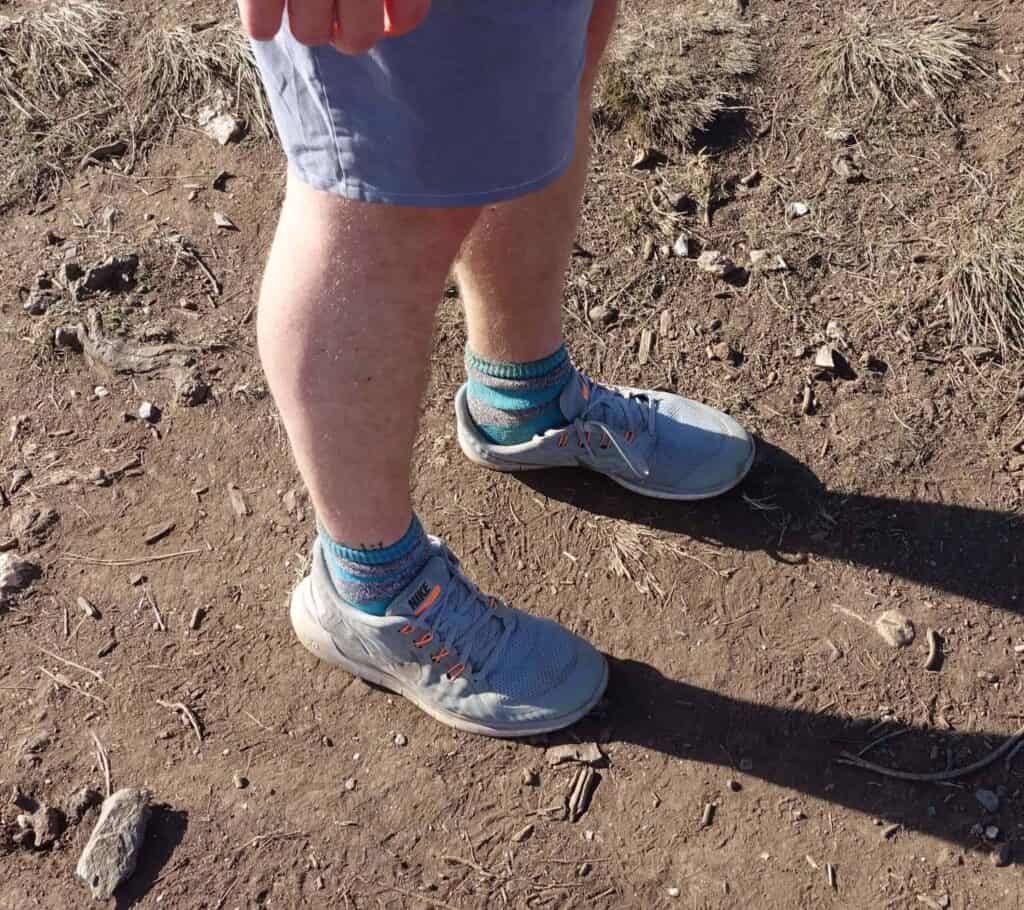
The question of boots versus trail shoes or even trainers is hotly contested.
Historically, long-distance hiking and walking footwear meant sturdy, leather boots. The school of thought was that they provided good support to the feet and ankles and kept feet dry.
However, more recent evidence indicates that while a thick boot may give more support to the base of the foot on rocky ground, it also gives less ‘ground feel’ than lighter soled shoes and therefore impairs balance on uneven surfaces.
The ankle support theory has also been largely debunked.
Lightweight walking shoes with better ‘ground feel’ cause you to make constant balance adjustments and thereby strengthen the feet and ankles.
We love trail sneakers or hiking shoes as a middle ground for stability, grip, and flexibility. In the hot summer, they are much more pleasant than a heavy sealed boot, too!
Camino Shoe Options Pros and Cons
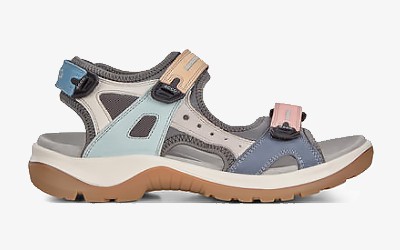
Pros:
- Lightweight
- Airflow
- Perfect for warm/hot weather on rough to flat terrain
Cons:
- Useless in case of rain
- Loses its interest in rougher mountainous terrains
- The odd stone that slips in

Pros:
- Lightweight
- We all have a comfortable pair
- Good for 1 week last 100km section
Cons:
- Thesole will be worn down a bit after a week of walking
- Not great on rougher terrain Low ankle support
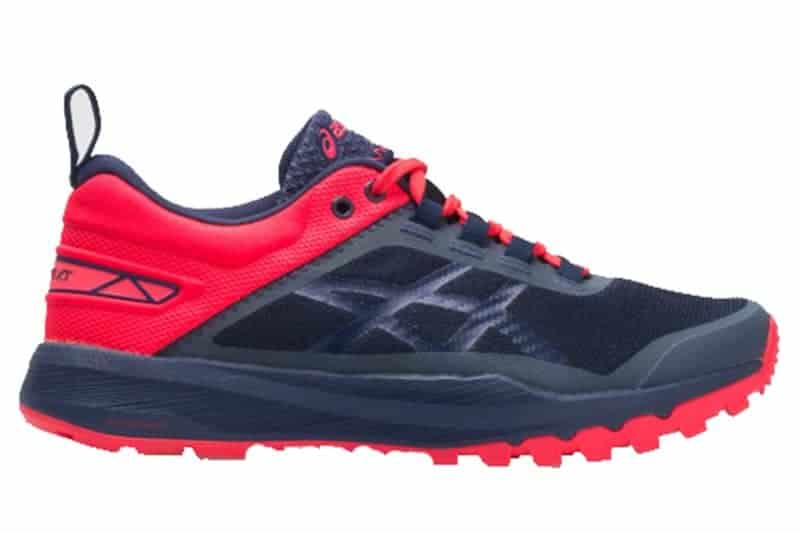
Pros:
- Lightweight
- A good all-rounder with decent ankle support
- Comes in waterproof
- Great to use after the walk
Cons:
- If waterproof, can bake your feet during warm weather
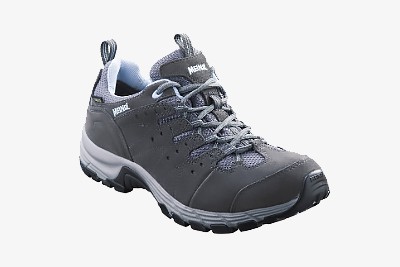
Pros:
- Great all-rounder
- Great ankle support
- Come in waterproof
- Will tackle 100% of the Camino easily
- You will use them at home and keep for a year or 2
- Not bad looking under a pair of jeans if you only want to bring 1 pair + flip flops for your room
Cons:
- Heavy (depends on model)
- Great for 10% of the Camino, too heavy for the rest

Pros:
- Great ankle support for mountainous parts
- You might already have a pair
- Come in waterproofs
Cons:
- Heavy (depends on model)
- Great for 10% of the Camino, too heavy for the rest
The Verdict – What Shoes Should You Wear on the Camino?
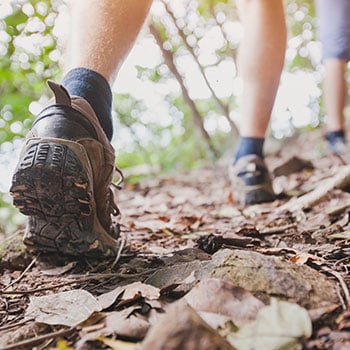
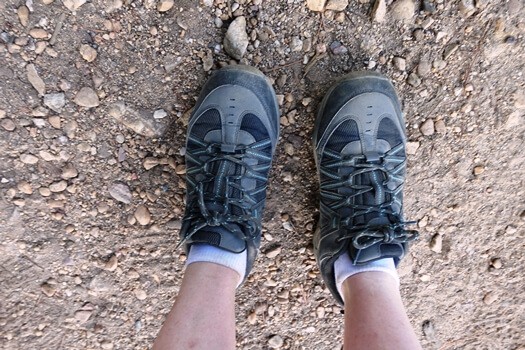
So where does this leave you when choosing walking shoes? When walking in snow or muddy, boggy conditions in cold weather, ankle-high boots may still be the answer for warmth and dryness.
Lightweight boots, trail shoes, or trainers are usually the best shoes for your Camino.
The most important thing is to find shoes that are comfortable and that give you a good sense of balance and traction on a variety of surfaces.
Also, take an extra pair of shoes for evenings and days off. This gives the feet a rest and allows your walking shoes to air out and dry. Options include running shoe style trainers or walking sandals which can be used as backup walking shoes. Many people also pack flip-flops so that their feet can dry out in the evenings.
Shoe Brands We Love for the Camino
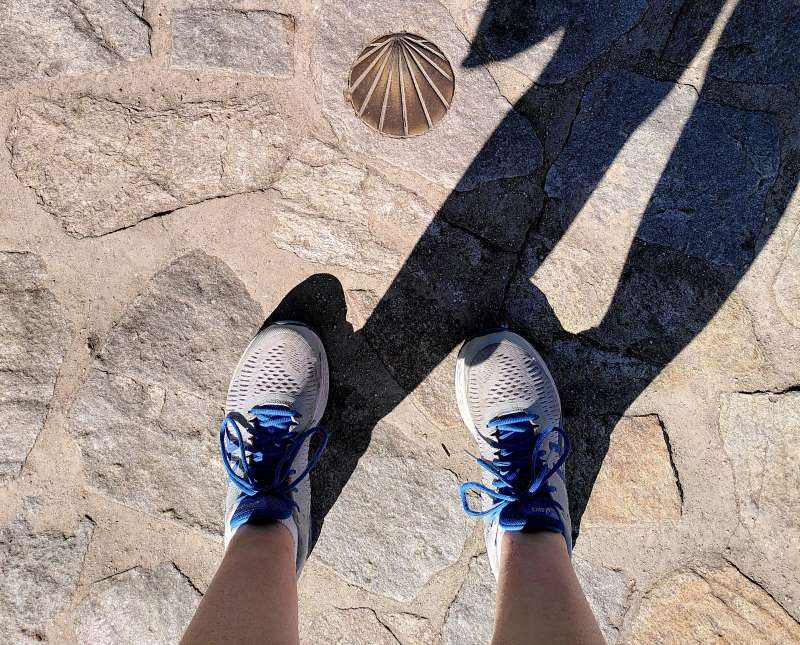
It is not about the brand, it is about the fit. You might even have the ideal pair of shoes already if you are doing a Camino that is largely road and flat paths!
However, if you need a place to start there are a few brands that offer a good selection of shapes and support levels in the walking shoe and trail runner range.
- Salomon
- Hoka
- Altra
- Brooks
- Keen
- Merrell
- La Sportiva
- Asics
- Nike
- New Balance
- Teva (if you decide to go with sandals)
We definitely recommend trying on a few different pairs of shoes from several brands. Take a good walk around the shop, jump, run, climb up and down a ramp if you can.
Walk Your Own Camino
At Follow the Camino we have been giving practical advice about the Camino de Santiago since 2006. Our clients get access to our Camino experts and can get advice and support from the beginning of their planning to the end of their pilgrimage.
We offer customised experiences on all of the Camino routes, which includes everything from hand-picked accommodation and meals to bag transfers and airport transfers.
We would love to help you to plan your next Camino adventure! To get a free quote and ask any questions – get in touch! For more information, you can also email us at info@followthecamino.com or schedule a virtual appointment with us!
Whether you travel for quality time with friends and family, to get away from everyday worries, or for personal fulfilment and enrichment, the memories you build on the Camino will stay with you forever.
Wear Your Walking Shoes As Much As You Can Before Your Camino
Whatever walking footwear you choose for the Camino, make sure you break them in for at least a few long walks of 3 to 4 hours or more before you leave. That way, you’ll know if there are any issues with the fit which need to be addressed pre-Camino.
Just remember, the best walking shoes for you are the ones that are fitted to your feet, and the only way to find those is by proper fitting followed by lots of walking!

